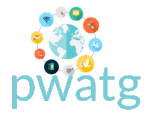Introduction
Loans play a critical role in personal and business finances, offering the necessary funds to make large purchases, invest in education, buy a home, or expand a business. With a wide variety of loan types available, it can be challenging to understand how each works and which one is best for your needs. Understanding the different types of loans and how they function is essential for making informed financial decisions.
In this article, we’ll explore the various types of loans available, how they work, and what you should consider before taking one. Whether you’re looking to purchase a home, finance your education, or borrow for a business venture, knowing the ins and outs of each loan type can help you select the right option.
1. Personal Loans
Personal loans are versatile loans that can be used for a variety of purposes, such as consolidating debt, making a large purchase, or covering unexpected expenses. They are typically unsecured, meaning they don’t require collateral.
How They Work:
- Loan Amount and Terms: Personal loans can range from a few hundred to tens of thousands of dollars, with repayment terms typically ranging from 1 to 7 years.
- Fixed or Variable Interest Rates: Personal loans usually come with fixed interest rates, meaning your monthly payments remain the same throughout the term. However, some loans may have variable rates that can change over time.
- Repayment Schedule: Repayment is usually made in monthly installments until the loan is fully paid off.
Pros:
- No Collateral Required: Unsecured personal loans don’t require you to put up property or assets as collateral.
- Flexible Use: You can use the loan for almost any purpose, from home renovations to medical bills.
Cons:
- Higher Interest Rates: Since these loans are unsecured, they often come with higher interest rates compared to secured loans.
- Qualification Requirements: Lenders may require a good credit score and income verification.
2. Mortgage Loans
Mortgage loans are loans specifically designed to help you purchase a home. They are secured by the property you buy, meaning if you fail to repay the loan, the lender can foreclose on the property to recover the debt.
How They Work:
- Loan Amount: Mortgages are typically large loans, often covering up to 80% to 90% of the home’s purchase price.
- Interest Rates: Mortgages can have either fixed interest rates (which stay the same throughout the life of the loan) or adjustable interest rates (which can change at set intervals).
- Repayment Term: The most common mortgage terms are 15, 20, or 30 years, with monthly payments that include both principal and interest.
Pros:
- Long Repayment Period: Mortgages typically come with long repayment terms, making monthly payments more affordable.
- Tax Benefits: In many countries, mortgage interest payments can be tax-deductible, potentially saving you money.
Cons:
- Risk of Foreclosure: If you default on the loan, the lender can seize the property.
- Long-Term Commitment: Mortgages often require a significant commitment, with loans lasting 15 to 30 years.
3. Auto Loans
Auto loans are loans taken out to purchase a vehicle, whether new or used. Like mortgages, auto loans are secured by the car itself, meaning the lender can repossess the vehicle if you fail to repay the loan.
How They Work:
- Loan Amount: Auto loans typically cover the cost of the car minus your down payment.
- Interest Rates: Auto loan interest rates can vary depending on the lender, loan term, and your credit score. They tend to be lower than personal loan rates but may be higher than mortgage rates.
- Repayment Term: Auto loans generally have shorter repayment terms than mortgages, typically ranging from 36 to 72 months.
Pros:
- Lower Interest Rates: Since auto loans are secured by the vehicle, interest rates are generally lower than unsecured personal loans.
- Fixed Payments: Most auto loans come with fixed monthly payments, making budgeting easier.
Cons:
- Depreciating Asset: The car you purchase with an auto loan depreciates in value over time, meaning you could owe more than the car is worth if you don’t make timely payments.
- Repossession Risk: If you fail to make payments, the lender can repossess your car.
4. Student Loans
Student loans are loans designed to help students pay for their education. They can cover tuition, books, living expenses, and other costs associated with higher education. These loans may come from the federal government, private lenders, or universities.
How They Work:
- Loan Amount: The amount you can borrow depends on the cost of your education and the type of loan.
- Interest Rates: Federal student loans tend to have lower interest rates compared to private loans. The rates can be fixed or variable, depending on the lender.
- Repayment Terms: Federal student loans often offer flexible repayment options, including income-driven repayment plans and deferment. Private loans may offer fewer options and more stringent terms.
Pros:
- Lower Interest Rates for Federal Loans: Federal student loans typically have lower interest rates and better repayment terms than private loans.
- Flexible Repayment Options: Federal loans often offer deferment or income-based repayment, which can be helpful for graduates who struggle to find employment immediately.
Cons:
- Student Loan Debt: Student loan debt can be a significant burden for many graduates, especially if they’re unable to find a high-paying job right after college.
- Limited Borrowing Flexibility: Federal student loans have strict borrowing limits, and private loans can be more difficult to obtain.
5. Business Loans
Business loans are loans taken out to start, expand, or run a business. These loans can come from traditional banks, online lenders, or government programs designed to support small businesses.
How They Work:
- Loan Amount: Business loans can range from small amounts for small businesses to large amounts for corporate financing.
- Interest Rates: Interest rates on business loans vary depending on the type of loan and the lender’s terms.
- Repayment Terms: Business loans can have terms ranging from short-term (a few months) to long-term (several years), with monthly payments typically made toward both principal and interest.
Pros:
- Support for Business Growth: Business loans can provide the necessary capital to grow or sustain your business.
- Flexibility: Business loans can be used for various purposes, including purchasing inventory, hiring staff, or expanding operations.
Cons:
- Collateral Requirements: Some business loans may require collateral, putting your assets at risk.
- Repayment Pressure: Business loans can put significant pressure on cash flow, especially if your business doesn’t generate enough revenue to cover the loan payments.
6. Payday Loans
Payday loans are short-term, high-interest loans designed to cover emergency expenses until your next paycheck. These loans are often used by individuals with poor credit or those who need quick access to cash.
How They Work:
- Loan Amount: Payday loans are typically small loans, usually ranging from $100 to $1,000.
- Interest Rates: Payday loans have very high interest rates, often upwards of 300% APR or more.
- Repayment Terms: Payday loans are typically due on your next payday, which could be two weeks or a month after you take out the loan.
Pros:
- Quick Access to Cash: Payday loans provide fast cash for emergencies, often with minimal paperwork.
Cons:
- Extremely High Interest Rates: The interest rates on payday loans can be exorbitant, making them a costly option if not paid off quickly.
- Debt Cycle Risk: If you’re unable to repay the loan on time, you may be forced to roll it over, which can lead to a cycle of debt.
7. Home Equity Loans and HELOCs
Home equity loans and Home Equity Lines of Credit (HELOCs) are loans that allow homeowners to borrow against the equity in their homes. These loans are secured by the value of the property, meaning if you fail to repay, the lender can foreclose on your home.
How They Work:
- Home Equity Loan: This is a lump-sum loan that you repay over a set term, typically with a fixed interest rate.
- HELOC: A HELOC is a revolving line of credit that works like a credit card, allowing you to borrow and repay funds as needed within a set draw period.
Pros:
- Lower Interest Rates: Since these loans are secured by your home, they tend to have lower interest rates than unsecured loans.
- Large Loan Amounts: You can borrow significant amounts depending on your home’s value.
Cons:
- Risk of Foreclosure: If you fail to repay the loan, your home may be at risk.
- Debt Impact: Borrowing against your home’s equity means taking on additional debt, which can affect your long-term financial stability.
Conclusion
Understanding the different types of loans and how they work is essential for making informed financial decisions. Whether you’re looking for a mortgage, an auto loan, a personal loan, or business financing, each type has its advantages and drawbacks. It’s crucial to assess your needs, the loan terms, and your ability to repay before taking out any loan. By doing so, you can ensure that you select the right loan for your situation and avoid unnecessary financial strain.

